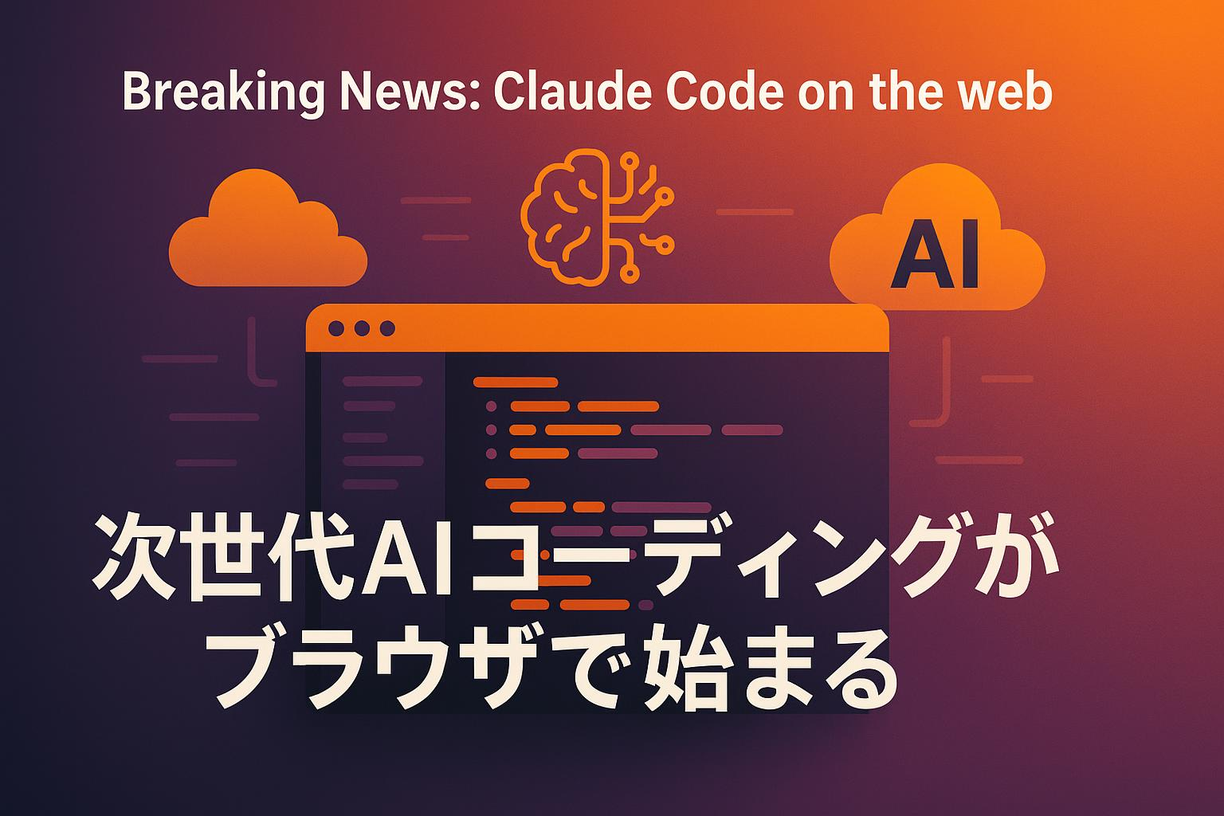When you usually search for something on Google, how fast and how accurate do you get to the information you want? Google's latest algorithm “MUVERA,” which I'm going to introduce this time, has the potential to fundamentally change that search experience, and it can truly be said that it is a revolution in search technology. This technology achieves both “speed” and “accuracy” of searches at an amazingly high level, and is about to evolve the very method of accessing information.
1. Why do we need new search technology now?
1-1. The “language barrier” faced by search technology
When we search because we want to know something, for example, if we enter “corduroy jacket men's medium,” Google searches for the most relevant information. However, conventional search systems only emphasized superficial matching of “whether the keyword is included on the page.” Therefore, even if what I was really looking for was a “product page for a medium size corduroy men's jacket,” there were times when pages that simply contained these words in pieces came up at the top. This was an issue where the search system didn't fully understand our “intentions.”
1-2. The evolution of technology that turns words into “numbers”
In order to overcome this “language barrier,” what has been attracting attention in recent years is a technology called “vector embedding (vector embedding).” This expresses words and sentences as “numeric vectors” in multidimensional space according to their meaning.
For example, in this “vector space,” the “king” and “queen” are placed close together, and “tragedy” and “comedy” are placed closer together under the common denominator of “Shakespeare's works.” In this way, things that are semantically similar are placed close, and things that are not similar are placed far away, so computers can mathematically understand the “meaning” of words.
1-3. The advent of “multiple vectors” and the challenges associated with it
The model called “Colbert,” which appeared in 2020, further evolved this vector embedding technology and introduced the idea of a “multi-vector model.” This enables richer semantic expression by generating multiple vectors for a single word or sentence. Thanks to Colbert, search accuracy was greatly improved, but at the same time, major barriers also appeared. It is**"sharp increase in computational costs"**.
Calculations that used to be done with a single vector now require complex calculations between multiple vectors, and the problem that processing speed became too slow in order to be put into practical use in large-scale search systems.
2. MUVERA: “Magic” that balances accuracy and speed
2-1. MUVERA's core: making complex calculations simple!
So what Google developed is this “MUVERA (Multi-Vector Retrieval Algorithm).” MUVERA's greatest invention is that it can process as fast as conventional “single vector searches” while maintaining the high accuracy of “multi-vector models” such as Colbert.
The secret lies in the revolutionary idea of “transforming complex multi-vector search challenges into existing optimized single-vector search problems” **. As a result, it is now possible to utilize the technical infrastructure for high-speed searches that Google has cultivated so far as it is.
2-2. “FDE”: Technology to “unify” multiple vectors
The technical cornerstone of MUVERA is a technology called “Fixed Dimensional Encoding (FDE).” This is information expressed by multiple vectors,“compress” or “aggregate” into a single vector of fixed lengthIt's a thing. With this clever transformation, it is now possible to dramatically improve computational efficiency without losing the information (such as similarity relationships) held by the original multiple vectors.
FDE creates a single vector by dividing vector spaces in detail and integrating vector information belonging to each section using mathematical methods (applying ideas such as probabilistic tree embedding). This simplifies complex similarity calculations and makes them faster.
2-3. Strengths that work “the same” with any data
Another great thing about MUVERA is its “data independence.” This means that the FDE transformation process is not tied to the nature of a particular data set. Therefore, stable and high performance can be demonstrated even in an environment where data changes daily and distribution changes, such as the Internet. This is a very important characteristic for search systems that must always provide the latest information.
3. MuVera and Colbert: technical connections
3-1. Colbert's Innovation: Dramatically Improving Search Accuracy
The Colbert mentioned above is a pioneer in greatly improving search accuracy. Whereas the conventional search model processed queries (search terms) and documents collectively, Colbert processed queries and documents separately, and adopted a method called “Late Interaction (late interaction),” which evaluates the relationship between the two for the first time in the “scoring stage” at a later stage.
Thanks to this, document information can now be collected and stored in advance, and we succeeded in maintaining accuracy while drastically reducing computational load during search.
3-2. “MaxSim”: Detailed Relevance Assessment
One of the keys for Colbert to improve accuracy is a scoring method called “maxSim (Maximum Similarity).” This repeats the process of calculating the degree of similarity with all words in the document for each word (token) in the query and selecting the one with the highest degree of similarity among them.
For example, if there is a query called “capital city” in response to the document “Paris is the capital of France,” the word in the document most related to “capital” and the word most related to “city” is found, and the degree of association between them is added to determine the overall score of the document. In this way, it is possible to capture the context more accurately by evaluating the relevance in detail at the word level.
3-3. Colbert's weakness called “slowness”
However, as described above, Colbert had computational cost issues specific to multi-vector models. Due to the huge number of vectors per document, processing speed was slow and prevented implementation in large-scale search systems. In particular, nonlinear computations like MaxSim required even more resources than simple computations.
4. MUVERA Breakthrough: “Solving” the Computational Cost Problem
4-1. Reducing complexity to “simple problems”
MUVERA took an approach that fundamentally solved Colbert's computational complexity problem. The idea is to transform complex similarity calculations between multiple vectors into an already highly optimized problem called “Single Vector-to-Vector Similarity Calculation (Maximum Inner Product Search: MIPS)” **.
As a result, complex calculations that had caused delays until now have been replaced by forms that can utilize existing high-speed algorithms, and dramatic performance improvements have been achieved.
4-2. Behind FDE Generation: A Step-by-Step Evolutionary Process
MUVERA's FDE is generated through the following 4 steps.
- Division of space: First, the space where the vectors are stored is divided into small “buckets” using mathematical methods (example: simHash).
- Dimensional compression: Multiple vectors in each bucket are aggregated (reduced in dimensions) into a single representative vector.
- Repeat multiple times: To obtain greater accuracy, this segmentation and aggregation process is repeated multiple times under different conditions.
- Final single vector generation: Multiple processing results are combined to generate a final fixed-length vector (FDE).
This process creates a single vector that efficiently preserves the semantic information of the original multiple vectors.
4-3. Proven performance with “theoretical guarantees”
MUVERA's FDE has been mathematically proven to be “capable of approximating the original multi-vector similarity within a specified range of error epsilon.” This means that it's not just a rule of thumb; it's a solid performance improvement that is theoretically supported. By going through a re-ranking process, it is possible to find the most relevant information based on this theoretical guarantee.
This is a very reassuring point for system designers. Performance is predictable and reliable, making it easier to determine what kind of system it should be incorporated into or how it should be adjusted.
5. Incredible performance: evolution in numbers
5-1. Search speed increased 10 times!?
The performance improvements brought about by MUVERA are astonishing when viewed in concrete numbers. According to Google Research's announcement, we succeeded in reducing search speed by 90% (in other words, 10 times faster) while improving search accuracy by an average of 10% compared to conventional cutting-edge methods. This means users can significantly reduce wait time and provide a smoother search experience.
Furthermore, there are reports that the number of candidate documents required to achieve a similar recall rate (coverage rate of necessary information) was reduced by 5 to 20 times. This dramatically reduces the overall computational load on the system.
MUVERA has consistently achieved high accuracy and low latency even in tests that evaluate various search tasks called BEIR Benchmarks, and its versatility and reliability have been proven.
5-2. Memory usage has also been drastically reduced!
As well as speed, the amount of memory required has been dramatically improved. One experiment showed that memory usage was reduced by approximately 70%. This means that the same performance can be achieved with less than one-third of conventional memory, making it possible to handle more information efficiently.
For example, when processing 1 million documents, what was required in the conventional multi-vector model about 40GB of memory can be greatly saved by using MUVERA. Furthermore, it has been demonstrated that memory usage can be compressed by 32 times when combined with specific compression techniques.
5-3. New data is also reflected “immediately”
When operating a system, import time is also important when new data is added. With the introduction of MUVERA, this processing time has also been drastically reduced. The import process, which used to take 20 minutes or more in conventional systems, is now completed in just 3 to 6 minutes with MUVERA. This makes it easier to keep up to date information.
6. Industrial Expansion: Open Source and Practice
6-1. Accelerate dissemination through “openness” of technology
Google has published the FDE generation algorithm as open source on GitHub to support the spread of MUVERA technology. This made it possible for all researchers and developers to try MUVERA and incorporate it into their own applications. Open source has been a major factor in the rapid spread of this technology in both academia and industry.
6-2. Adoption in vector database “Weaviate”
Weaviate, the main vector database player, has also implemented the MUVERA encoding algorithm starting with version 1.31. As a result, multi-vector embeddings such as Colbert can now be handled more efficiently. Users are now able to adjust the balance between accuracy and efficiency according to application needs.
6-3. It is expected to be applied to various fields
MUVERA's scope of application is not limited to search engines. For example, the video platform YouTube makes it possible to better understand users' interests and recommend personalized videos. Even in the field of natural language processing, it is expected to be used for improving the efficiency of large-scale language models, more accurate document retrieval, and question answering systems. Any situation where information retrieval is important, such as a company's internal systems or customer support, will benefit from this technology.
7. Has there been a change in SEO strategy?
7-1. From focusing on keywords to focusing on “meaning”
The advent of MUVERA is likely to push for changes in search engine optimization (SEO) strategies. Until now, importance has been placed on how to effectively arrange specific keywords, but as semantic understanding technology such as MUVERA progresses, more emphasis will be placed on how much content matches the user's “search intent.”
7-2. The “quality” of content becomes even more important
Content quality is more important than ever as search engines evaluate not only word matches, but also the value content provides and compatibility with the searcher's intent. Creating useful content that is truly valuable to users increases the chance of leading to higher display in search results.
7-3. Does niche information and expertise shine too?
MUVERA's ability to understand meaning is expected to be able to provide more appropriate information even for “long keywords” (keywords showing specific needs, although the number of searches is small) that have been difficult to find until now, and search queries containing specialized content. This will be a new opportunity for websites that offer specialized content specific to specific fields.
8. Technical challenges and future prospects
8-1. A subtle “trade-off” with accuracy
MUVERA provides many benefits, but in the process of information aggregation by FDE, there is a possibility that only a small amount of information held by the original multi-vector will be lost. This can be described as a subtle “trade-off” between search accuracy. However, this effect can be adjusted in parameter settings, and in many cases it is kept to a level where it is not a practical issue.
8-2. “Complexity” of implementation
Compared to traditional single vector searches, MUVERA implementation is more complicated. There are also situations where advanced knowledge is required, such as the FDE generation process and integration of multiple technical elements. However, open source implementations and tools like Weaviate are helping to reduce this complexity.
8-3. “Request” for computational resources
MUVERA is more efficient, but it still requires additional computational resources when compared to single vector searches. When implementing, it's important to consider the balance between the benefits obtained and the resources required.
8-4. The possibility of further “evolution”
MUVERA's technology is still developing, and further optimizations are expected in the future. Performance improvements beyond current imagination may be realized through the development of more efficient algorithms, enhanced cooperation with dedicated hardware such as GPUs, and even fusion with new computational technologies such as quantum computing.
8-5. “Applications” to other fields are also expanding
This technology is expected to be applied not only to information retrieval, but also to a wide range of fields, such as image recognition, speech processing, and even data analysis in the biological field. The ability to efficiently process complex data will boost the development of various fields of science and technology.
9. Summary: The beginning of a “new era” of search technology
9-1. The “revolution” brought about by MUVERA
Google's Muvera algorithm has brought about a revolutionary advance in the history of search technology that can truly be called a “revolution.” It has cleared the problem of balancing the accuracy of multi-vector models with the speed of single-vector searches, which was previously thought to be impossible, and has the potential to fundamentally change the search experience.
9-2. The “ripple effect” on the entire industry
This innovation will have a huge impact not only on the search engine industry, but on all fields of information technology. It is expected that all services based on information retrieval, such as e-commerce, education, and entertainment, will provide a higher quality and more efficient experience. There is also a good possibility that it will be a catalyst to accelerate the development and spread of AI technology as a whole.
9-3. “Expectations” for the future
MUVERA is an important step in the evolution of information retrieval, but it's not the end. Using this technology as a foundation, the way we access and utilize information will continue to evolve. MUVERA is about to pave the way for a future that evolves into a system that is more intelligent, faster, and deeply understands our intentions.
※ This article refers to public information from Google Research, Weaviate, IBM Developer, arXiv, etc., and has been restructured and explained to help readers understand. Please check the official documents of each organization for technical details.
References:
- Google's New MUVERA Algorithm Prospective Search - Search Engine Journal
- MUVERA: Making multi-vector retrieval as fast as single-vector search - Google Research
- More efficient multi-vector embeddings with MUVERA - Weaviate
- MUVERA: Multi-Vector Retrieval via Fixed Dimensional Encodings - arXiv
- How the Colbert re-ranker model in a RAG system works - IBM Developer

















































